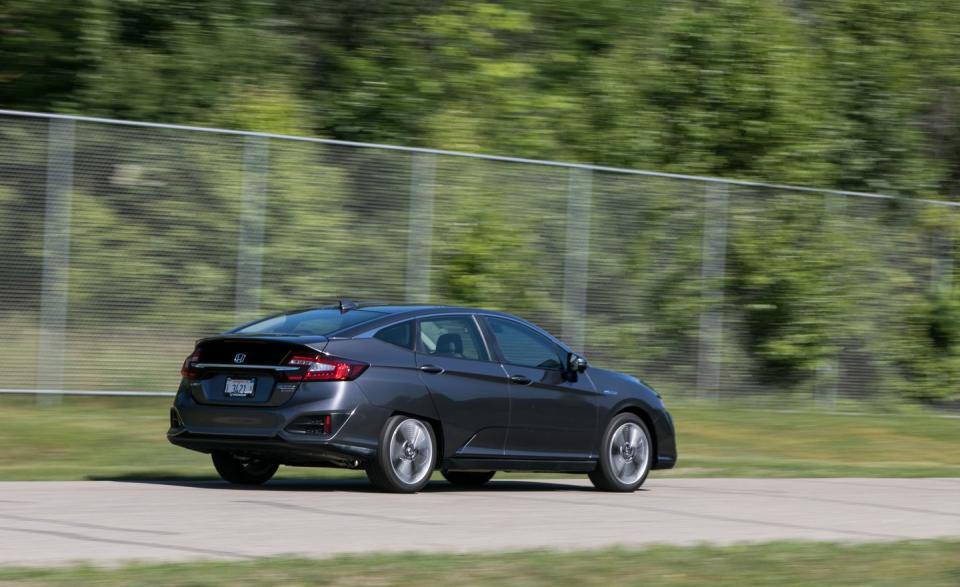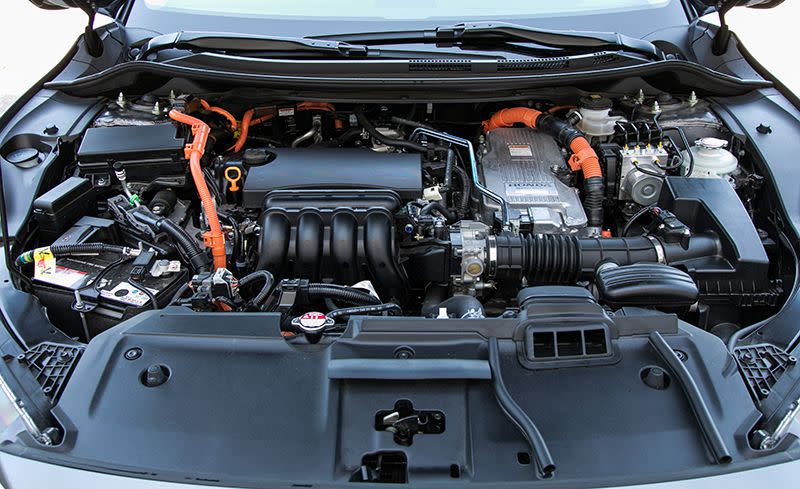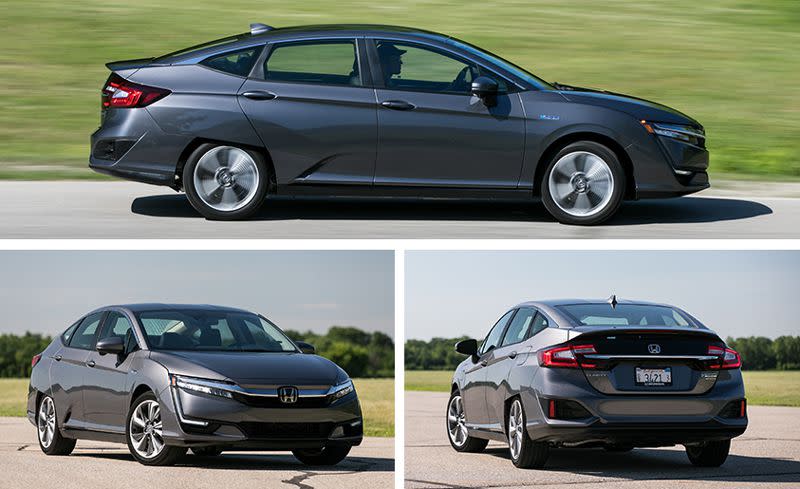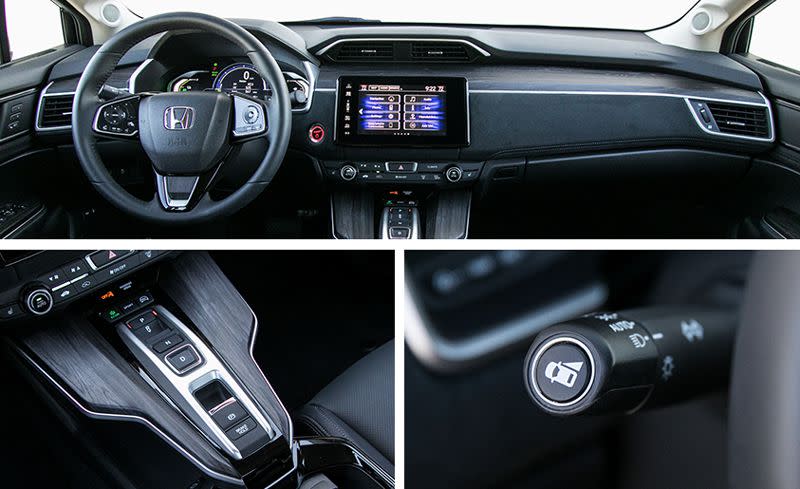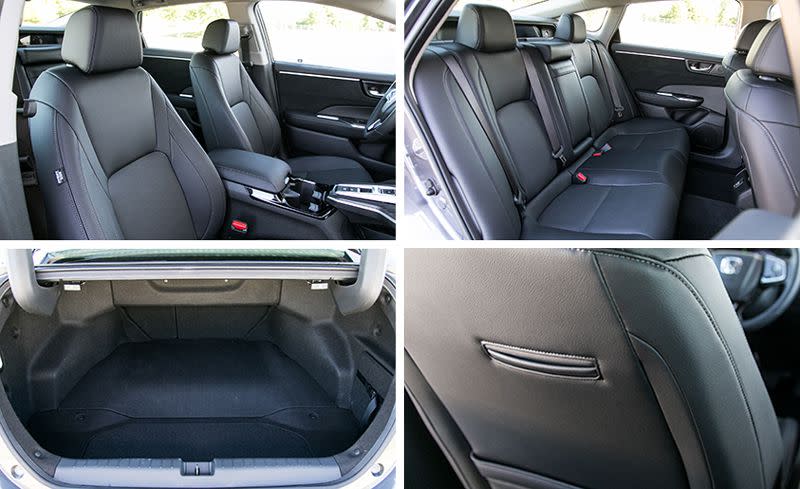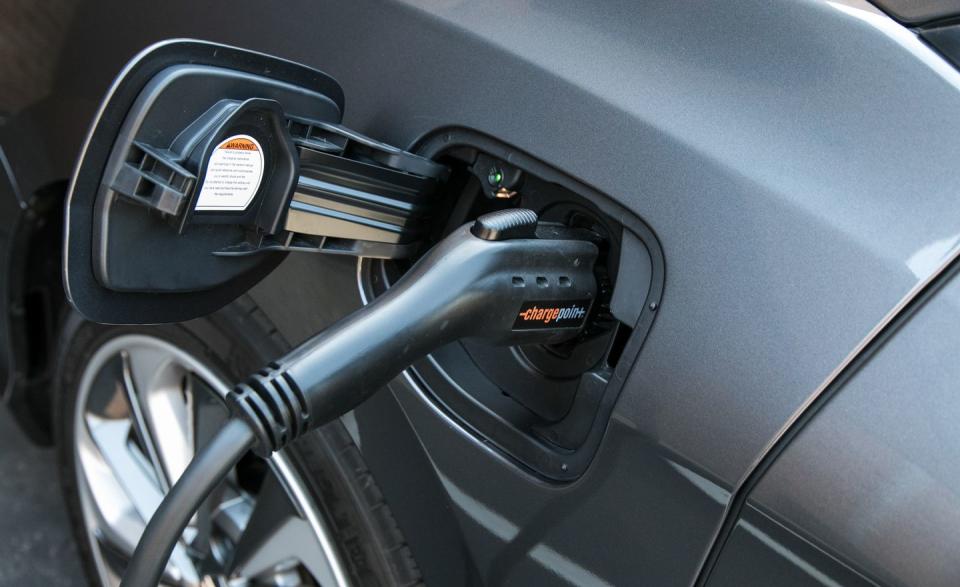Honda Clarity Plug-In Hybrid Tested: Honda’s Sci-Fi Future
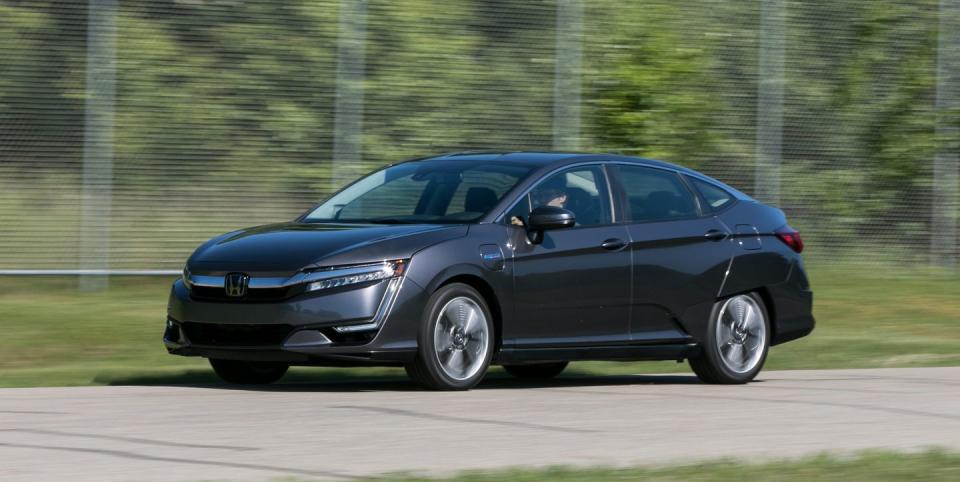
Place your bets: The world will be filled with autonomous cars, or it won’t. Electricity will replace internal-combustion engines, or maybe not. High-density development around public transportation will make cars unnecessary, or people will still want their own houses with big lawns and huge garages. Whether the result of predestination, free will, random chance, or divine inevitability, the future can only be glimpsed, at best. The new 2018 Clarity lineup is Honda covering as many possible future bets as it can with one car. After all, one of the bets-perhaps this plug-in hybrid-is bound to be a good one.
Almost, Nearly Conventional
By historic standards, the plug-in hybrid is the most ordinary of the three available Clarity models, since it’s the only one with an internal-combustion engine aboard. But in how it drives, it has much in common with the battery-powered Clarity EV and Clarity fuel cell, in that its main form of propulsion is an electric motor. That means it drives like an electric car and not like an Accord-at least not a lot like an Accord.
Conceptually the Clarity plug-in’s powertrain is closest to that in the Chevrolet Volt. It’s a serial hybrid in which the internal-combustion engine is used to turn a generator that produces current to charge batteries for an electric motor that primarily drives the vehicle. This is unlike more typical parallel hybrids such as the Toyota Prius, where the internal-combustion engine and electric motors both are mechanically connected to the transmission to propel the vehicle. There are some unusual circumstances wherein the Clarity plug-in’s internal-combustion engine will directly contribute torque to the drive wheels through a planetary gear set. That’s true with the Volt too. But whereas the Volt and the Prius employ power-split transaxles, the Clarity has no means of varying its gear ratio on the fly, instead relying on a direct-drive ratio for the traction motor and a different direct-drive ratio for its engine.
Unless you take the time to hunt down the discrete exhaust pipe, there aren’t many immediate clues that this is the plug-in and not the EV or the fuel-cell model-gotta keep ’em guessing. There’s a late-1960s, early-‘70s sci-fi vibe to the Clarity’s styling; it looks as if it should hover through a few frames of Logan’s Run or THX 1138. It’s just weird enough-look at those rear-wheel spats-to tell the world that you’re running on several funky chromosome pairs.
At 192.7 inches long over a 108.3-inch wheelbase, the Clarity is the largest sedan sold by the Honda division, although it’s only a half-inch longer than an Accord and its wheelbase is actually 3.1 inches shorter. Where the Clarity far surpasses the Accord is in weight. The Clarity Touring tested here hit C/D’s scales at a bruising 4054 pounds. The Accord Touring 2.0T is more than 600 pounds lighter. That means extra weight equivalent to a medium-size pony is packed into the Clarity, most of it in the battery. Fully filling the battery pack, by the way, takes about 2.5 hours from a 240-volt source but as many as 12 hours on a 120-volt circuit.
The Art of Stateliness
Most of the time the front-wheel-drive Clarity runs solely on its 181-hp AC motor. Fed by a 17.0-kWh lithium-ion battery and making 232 lb-ft of torque from the moment it starts turning, it’s a well-behaved and easygoing motor that pulls quietly through a direct drive and a 3.42:1 final-drive differential.
There’s no way 181 horsepower is going to propel more than two tons with much urgency. With a fully charged battery, the Clarity Touring whizzed to 60 mph in 7.7 seconds. The lighter Accord Touring with a 252-hp turbocharged 2.0-liter inline-four and 10-speed automatic reaches 60 mph in 5.5 seconds. If thrust is a virtue, the Accord is a saint and the Clarity plug-in hybrid is just a pretty good guy.
Backing up the electric motor is a 1.5-liter inline-four rated at 103 horsepower and 99 lb-ft of peak torque. Once the Clarity’s modest battery pack is drained, the four-cylinder kicks in and heads for a constant speed to feed current to the batteries. This constant engine speed-there’s no tach aboard to measure it-doesn’t sound very automotive. But it does sound Honda-like, as in the Honda generator used to provide current to inflate the bouncy house at a kid’s birthday party.
Honda claims a total powertrain output of 212 horsepower. Interestingly, this is exactly the same cumulative output Honda claims for the Accord hybrid, which, hey look at that, also incorporates a 181-hp electric motor rated to deliver 232 lb-ft of torque. For Clarity shoppers, the greatest temptation while at the dealership will be to switch over and get an Accord hybrid instead.
The Clarity plug-in runs $34,295 and happens to be the only Clarity variant available for outright purchase by the public. The EV and fuel-cell versions are lease-only propositions. A Touring trim, as we’ve tested here, costs $37,495. Meanwhile, the dang nice, kind-of-ritzy Accord hybrid in Touring trim goes for $35,605.
Inner Spacey
As goony as the Clarity looks from the outside, it’s pure Hilton Garden Inn on the inside. It’s very mainstream Honda at first glance, but the design is a bit more aggressive in its shapes and more restrained in its details. It’s completely inoffensive, relentlessly logical in operation, and utterly comfortable. The front seats are perfectly shaped and covered in perforated leather, while much of the rest of the trim is “plant-derived bio-fabrics,” which sounds like it was produced in a yurt in a meadow near Big Sur.
The whole Clarity interior is conservatively tailored and roomy enough. But if your Uber rating is a point of personal pride, know that the Clarity’s rear-seat legroom is 36.2 inches while the same measurement in the Accord is 40.4 inches. That’s enough to matter.
With struts up front and a multilink suspension out back, the Clarity’s chassis is strictly typical Honda. At 12.7:1, the electrically assisted steering rack’s ratio is slightly quicker than the Accord’s 11.8:1. Throw in the modest reflexes of the eco-conscious 235/45R-18 Michelin Energy Saver A/S tires, and the result is a muffled driving experience. The skidpad grip number comes in at a stability-control-inhibited 0.80 g.
What the plug-in Clarity Touring does best is tour. The ride is cushy and tire and wind noise is subdued even when there’s virtually no engine or motor noise competing with it. There’s a Sport mode, but it seems out of character for this easygoing machine. Regenerative braking triggered by paddles behind the steering wheel adds some engagement to the package, but that fascination seems to fade rapidly, and it’s easy to forget about the paddles altogether.
Highway Running
The EPA estimates the Clarity plug-in’s electric-only range at 48 miles; we went 41 miles at 75 mph before the engine fired up. That makes the Clarity our new plug-in champ, dethroning the Chevy Volt, which went 38 miles before its gas engine kicked in. For those curious about the Toyota Prius Prime, we’ve run that model on the same highway loop and achieved about 19 miles on electricity alone.
We also measured 46 mpg on the highway in hybrid mode for the Clarity, versus 39 mpg for the Volt. In this measure, the Clarity fell just short of the Prius Prime, which returned 49 mpg (in Premium trim) and 47 mpg (Advanced and Plus trims).
Of course, range anxiety isn’t an issue because there’s also that gasoline engine aboard to keep things going (so long as there’s gas in the 7.0-gallon tank). But the point here is to operate without that engine turning on, isn’t it? Meanwhile, the EPA estimates the Clarity fuel cell range at 366 miles, and the same regulators have the all-battery version pegged at 89 miles of range.
Future Shock
The Clarity plug-in feels like a fully realized car and not just a jiggered-with Accord. Honda seems to be getting comfortable with alternative propulsion, and the seamless operation of the Clarity’s hybrid system is encouraging. And yet, it doesn’t appear that Honda has everything covered with the Clarity. It’s missing the light, precise feel that’s so consistently delightful in the best Hondas. And it’s that character, more than any trick electrical tech, that likely will consistently pay off as a differentiator for Honda going forward, whatever form the future takes.
You Might Also Like

 Yahoo Autos
Yahoo Autos 